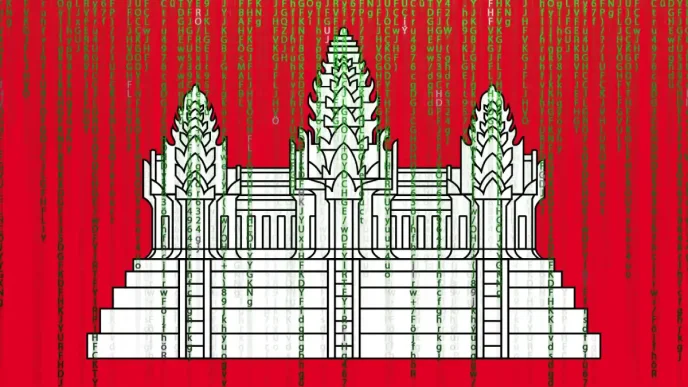In the heart of Cambodia, where golden fields stretch under the relentless sun, rice is more than a crop—it is the lifeblood of the nation. Deeply woven into the cultural, social, and economic fabric of the kingdom, rice sustains millions of livelihoods and stands as a symbol of national pride. Yet, as the climate crisis intensifies, this cherished staple faces unprecedented threats, testing the resilience of farmers and the government alike.
A Pillar of Cambodian Life
Agriculture remains a cornerstone of Cambodia’s identity, even as its contribution to the nation’s gross domestic product (GDP) has shrunk from 35.5% in 2000 to 16.5% in 2022. Over 5 million people—roughly 35% of the population—depend on the sector for their livelihoods. Among the myriad crops cultivated, rice reigns supreme, accounting for 60% of agricultural production and occupying a third of the country’s arable land as of 2023/24.
Beyond its economic weight, rice is a cultural icon. A staple in every Cambodian household, it underpins food security and serves as a form of social stability. Its affordability and availability are non-negotiable for a nation where access to adequate nutrition remains a daily concern for many. Internationally, rice elevates Cambodia’s profile, with fragrant jasmine varieties like Phka Rumduol and Malis Angkor earning the prestigious “World’s Best Rice” title in multiple years, including 2012, 2013, 2014, 2018, 2022, and 2024.
Production has soared over the past decade, climbing from 9 million tonnes in 2012 to 13 million tonnes in 2024, driven by improved techniques, commercialisation, and land expansion. In 2024 alone, agricultural exports generated nearly $1 billion—around 22% of GDP—with rice and paddy constituting almost half of that figure. These numbers reflect not just economic success but the dedication of farmers, the Royal Government of Cambodia, and development partners in transforming a traditional practice into a global contender.
Climate Crisis: A Growing Threat
Despite these achievements, Cambodia’s rice industry stands on precarious ground, battered by the intensifying impacts of climate change. Southeast Asia, including Cambodia, ranks among the regions most vulnerable to floods, extreme heat, and droughts. For small-scale farmers, who often lack the resources or knowledge to adapt, these conditions pose existential risks.
The year 2024 offered a stark reminder of nature’s unpredictability. During the dry season, the El Niño phenomenon triggered prolonged droughts and a shortened rainy season, affecting 120,000 hectares of rice fields across 17 provinces. While government intervention salvaged 75% of the impacted areas, 25% of the fields suffered irreparable damage. The rainy season brought further devastation, with floods inundating over 50,000 hectares, damaging 60% of the affected crops, and impacting nearly 60,000 households. Tragically, 27 lives were lost to these floods, underscoring the human toll of climate-related disasters.
Globally, rising temperatures—driven by human activities such as fossil fuel combustion and deforestation—are blamed for increasingly severe weather events. From wildfires in the United States to catastrophic flooding in Pakistan and Central Africa, the fingerprints of climate change are evident. Cambodia, with its fragmented rice industry and reliance on rain-fed agriculture, finds itself particularly exposed. A 2023 report by the World Bank Group warns that, under a business-as-usual scenario with no adaptive strategies, Cambodia’s aspirations to become an upper-middle-income country by 2030 could be derailed by these environmental challenges.
Market Volatility and Structural Shifts
Climate is not the only hurdle. The rice export market, a critical source of foreign currency and international prestige, is notoriously volatile. Since late 2014, farmers cultivating OM rice—a variety prized for its disease resistance and high yield—have grappled with plummeting prices due to oversupply. Many had shifted to OM varieties to boost productivity, only to find themselves undercut by market dynamics.
Another looming challenge is Cambodia’s impending graduation from Least Developed Country (LDC) status. While a marker of progress, this transition could strip the kingdom of trade preferences, imposing higher tariffs and diminishing competitiveness in global markets. If confirmed, such a shift may squeeze profit margins for rice exporters and place additional strain on rural communities already battling environmental uncertainties.
Government and Partners Are Stepping In to Offer Help
Amid these adversities, the Cambodian government and its allies are not standing idle. Strategic interventions aim to bolster resilience and sustain growth in the agricultural sector. The Asian Development Bank, for instance, has supported infrastructure projects and agricultural development, focusing on irrigation, seeding, and post-harvest processes to mitigate climate risks. Meanwhile, the government’s $100 million financing scheme through the Agricultural and Rural Development Bank seeks to stabilise prices and provide farmers with financial breathing room.
Under the political agenda of the seventh mandate government, a new programme deploys agricultural specialists to farming communes nationwide. Though rollout since 2024 has been gradual, the initiative promises to enhance farmers’ techniques and adaptability. Additionally, the Ministry of Agriculture, Forestry and Fisheries is fostering “Modern Agriculture Communities” to improve market access, empowering farmers to navigate competitive landscapes.
These efforts reflect a broader determination to transform challenges into opportunities. The 2023 World Bank report suggests that, with the right policies, Cambodia could steer its economy onto a resilient and sustainable path. By learning from past crises and current trends, the kingdom aims to build a society better equipped to handle rapid environmental and economic shifts.
A Future of Resilience and Pride
Rice is more than a commodity in Cambodia; it is a source of identity and strength. From the award-winning jasmine varieties that capture global acclaim to the daily meals that nourish families, it binds the nation together. Yet, as floods and droughts grow fiercer and market pressures mount, the future of this vital crop hangs in a delicate balance.
The path forward demands innovation, collaboration, and unwavering commitment. If adaptive measures—such as enhanced irrigation, farmer training, and market diversification—are scaled effectively, Cambodia’s rice industry could not only survive but thrive amid adversity. While no one can predict the exact trajectory of climate impacts or trade dynamics, the kingdom’s history of perseverance offers hope.
For now, the fields of Cambodia remain a testament to human endurance. Farmers like those harvesting under the scorching sun continue to sow seeds of sustenance and pride, trusting that, with collective effort, their beloved crop will endure as a cornerstone of the nation’s story. As challenges loom, so too does the opportunity to forge a future where rice—and the people who cultivate it—stand resilient against the odds.














